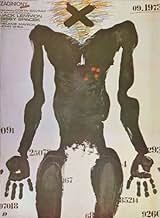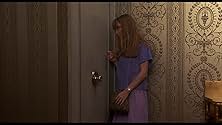IMDb-BEWERTUNG
7,7/10
24.092
IHRE BEWERTUNG
Als ein idealistischer amerikanischer Schriftsteller während des chilenischen Staatsstreichs im September 1973 verschwindet, versuchen seine Frau und sein Vater, ihn zu finden.Als ein idealistischer amerikanischer Schriftsteller während des chilenischen Staatsstreichs im September 1973 verschwindet, versuchen seine Frau und sein Vater, ihn zu finden.Als ein idealistischer amerikanischer Schriftsteller während des chilenischen Staatsstreichs im September 1973 verschwindet, versuchen seine Frau und sein Vater, ihn zu finden.
- 1 Oscar gewonnen
- 12 Gewinne & 23 Nominierungen insgesamt
Martin LaSalle
- Paris
- (as Martin Lasalle)
Handlung
WUSSTEST DU SCHON:
- WissenswertesDuring the Pinochet dictatorship, which ran from 1973 to 1990, this picture was banned in Chile.
- PatzerIn the scene where Jack Lemmon is at the State Department early in the movie trying to get information about Charlie, there is the presidential portrait of Richard Nixon on the wall in the background and a more personal photo of him on Marine One on the credenza behind the desk. That photograph, with fingers in the V-peace sign, was taken upon his final departure from the White House in 1974 and could not have been on someone's desk in 1973.
- SoundtracksMy Ding a Ling
(1952)
Written by Chuck Berry (uncredited)
Performed by Chuck Berry
Courtesy of All Platinum Records, Inc.
Ausgewählte Rezension
There's a particularly chilling scene in this movie. It comes near the end in a confrontation between Charles Horman (Jack Lemmon) and staff members of the American ambassador in post-coup Chile, 1973. To this point the staff has sounded polished and professional in their concern for Horman's missing son, an apparent casualty of the coup. But in this scene the devious reality of American policy begins to emerge from behind the velvet glove, and Horman's passage from credulous liberal to disillusioned skeptic is complete. In a nutshell, the scene symbolizes one of the great divides in American political life, between the polished propaganda face our government presents to the people and the grim realities that face covers over, especially in dealing with Third World countries like Chile. Horman represents the frustration many feel in trying to deal with a cosmetic facade supported by both major political parties, when beneath it crouches the murderous policies of imperial rule.The real question the film poses is what Horman will do upon returning home.
The film itself remains a gripping eyeopener from first to last. Costa-Gravas is especially good at recreating the abject terror of fascist rule: where long hair is forbidden and women are forced back into skirts, where people are present one minute and gone the next, where a democratically elected government is present one minute and gone the next, and where a Henry Kissinger can do the behind-the-scenes dirty work and be honored for it (not in the movie, but true nevertheless). The acting is first-rate, and a tour-de-force for Lemmon in particular. Ditto, the often overlooked Charles Cioffi who puts the real chill in the confrontation scene. Two complaints: the arch symbolism of the riderless white horse conflicts with Costa-Gravas's documentary approach, and why, oh why, did they have to make Horman's son so cuddly. The audience gets the point without spooning on the sugar. Anyhow, this remains a fine piece of revelatory film-making and retains as much relevancy for today's audience as it did twenty years ago.
The film itself remains a gripping eyeopener from first to last. Costa-Gravas is especially good at recreating the abject terror of fascist rule: where long hair is forbidden and women are forced back into skirts, where people are present one minute and gone the next, where a democratically elected government is present one minute and gone the next, and where a Henry Kissinger can do the behind-the-scenes dirty work and be honored for it (not in the movie, but true nevertheless). The acting is first-rate, and a tour-de-force for Lemmon in particular. Ditto, the often overlooked Charles Cioffi who puts the real chill in the confrontation scene. Two complaints: the arch symbolism of the riderless white horse conflicts with Costa-Gravas's documentary approach, and why, oh why, did they have to make Horman's son so cuddly. The audience gets the point without spooning on the sugar. Anyhow, this remains a fine piece of revelatory film-making and retains as much relevancy for today's audience as it did twenty years ago.
- dougdoepke
- 1. Dez. 2014
- Permalink
Top-Auswahl
Melde dich zum Bewerten an und greife auf die Watchlist für personalisierte Empfehlungen zu.
Details
- Erscheinungsdatum
- Herkunftsländer
- Sprachen
- Auch bekannt als
- Missing
- Drehorte
- Acapulco, Guerrero, Mexiko(as Vina del Mar)
- Produktionsfirmen
- Weitere beteiligte Unternehmen bei IMDbPro anzeigen
Box Office
- Budget
- 9.500.000 $ (geschätzt)
- Bruttoertrag in den USA und Kanada
- 14.000.000 $
- Weltweiter Bruttoertrag
- 14.000.000 $
- Laufzeit2 Stunden 2 Minuten
- Farbe
- Seitenverhältnis
- 1.85 : 1
Zu dieser Seite beitragen
Bearbeitung vorschlagen oder fehlenden Inhalt hinzufügen







































